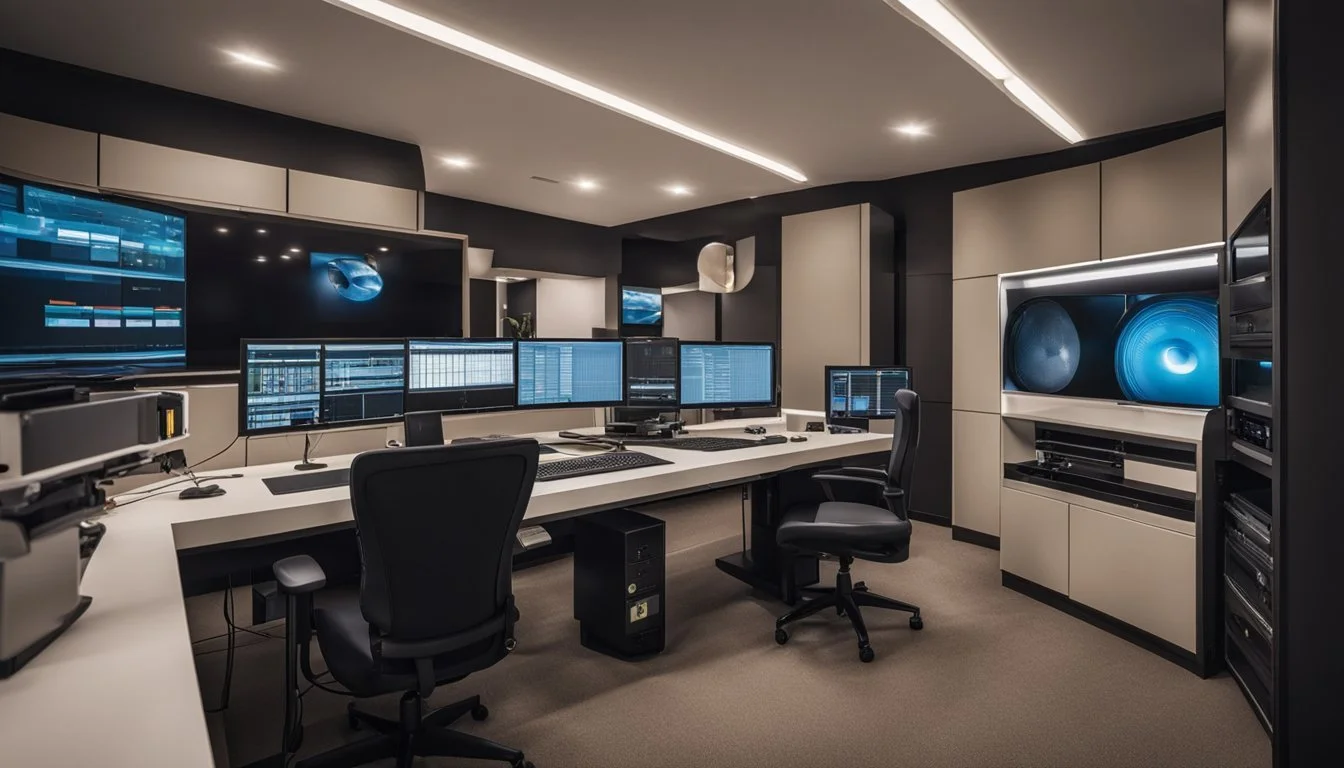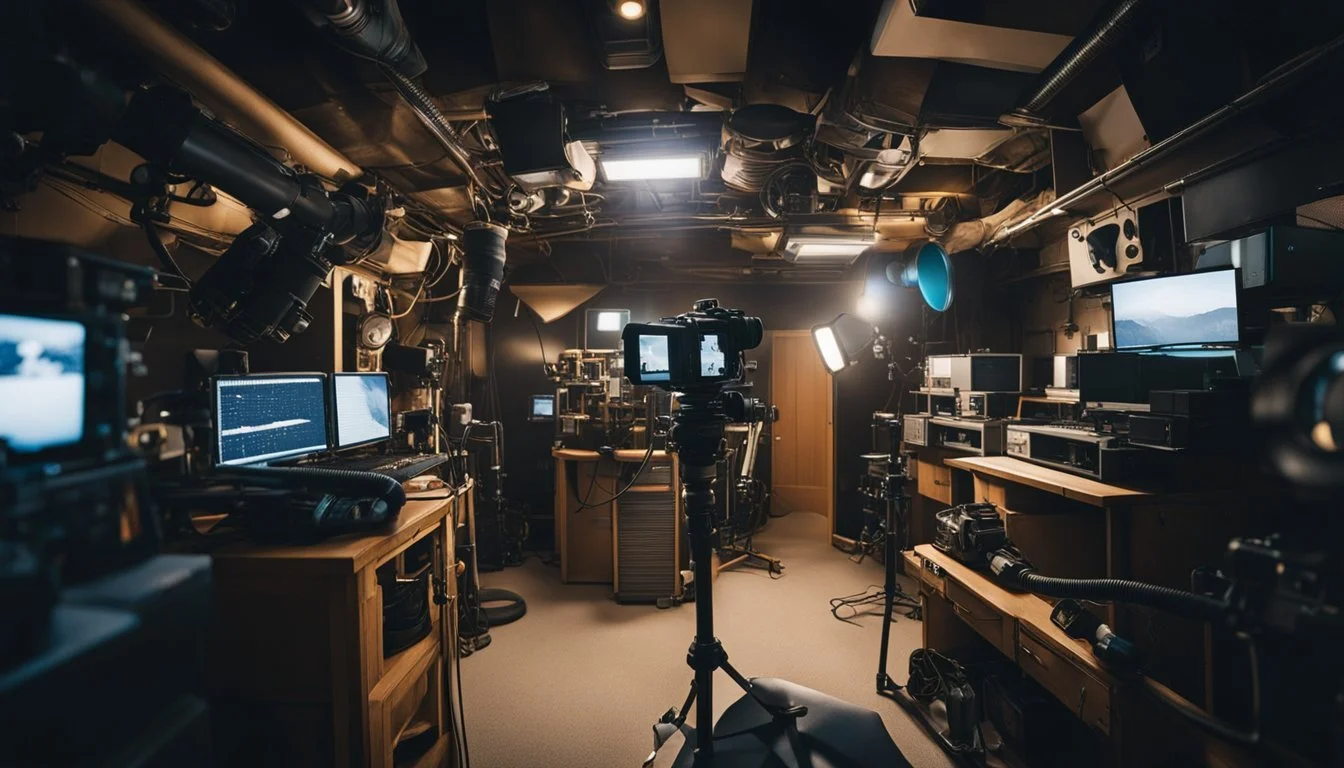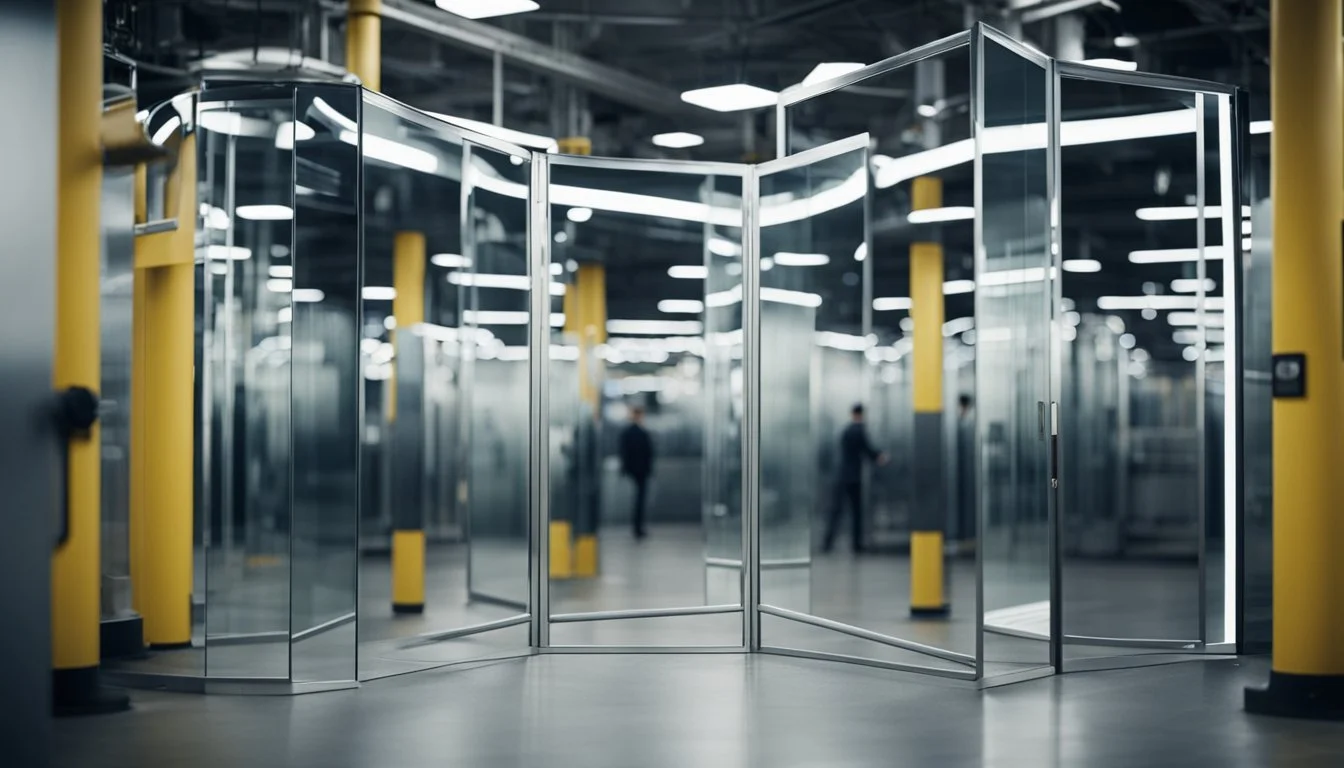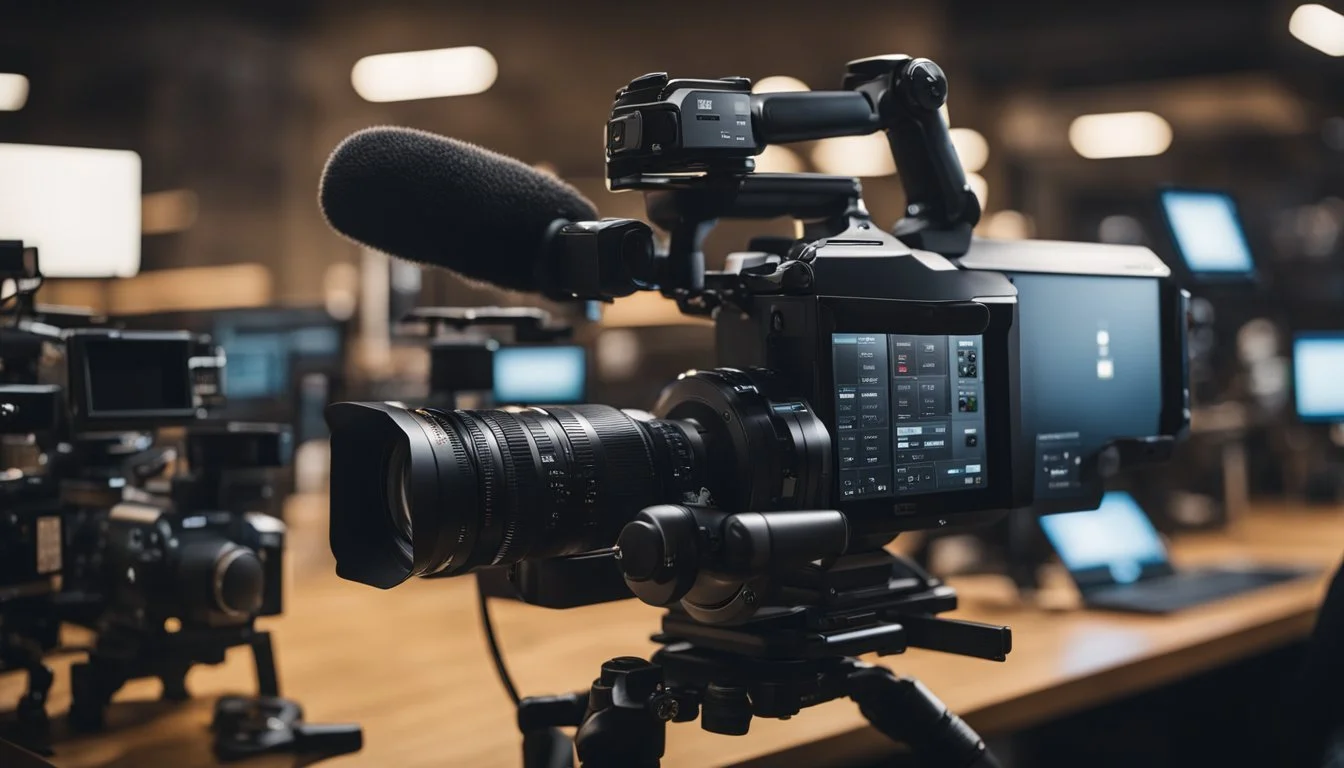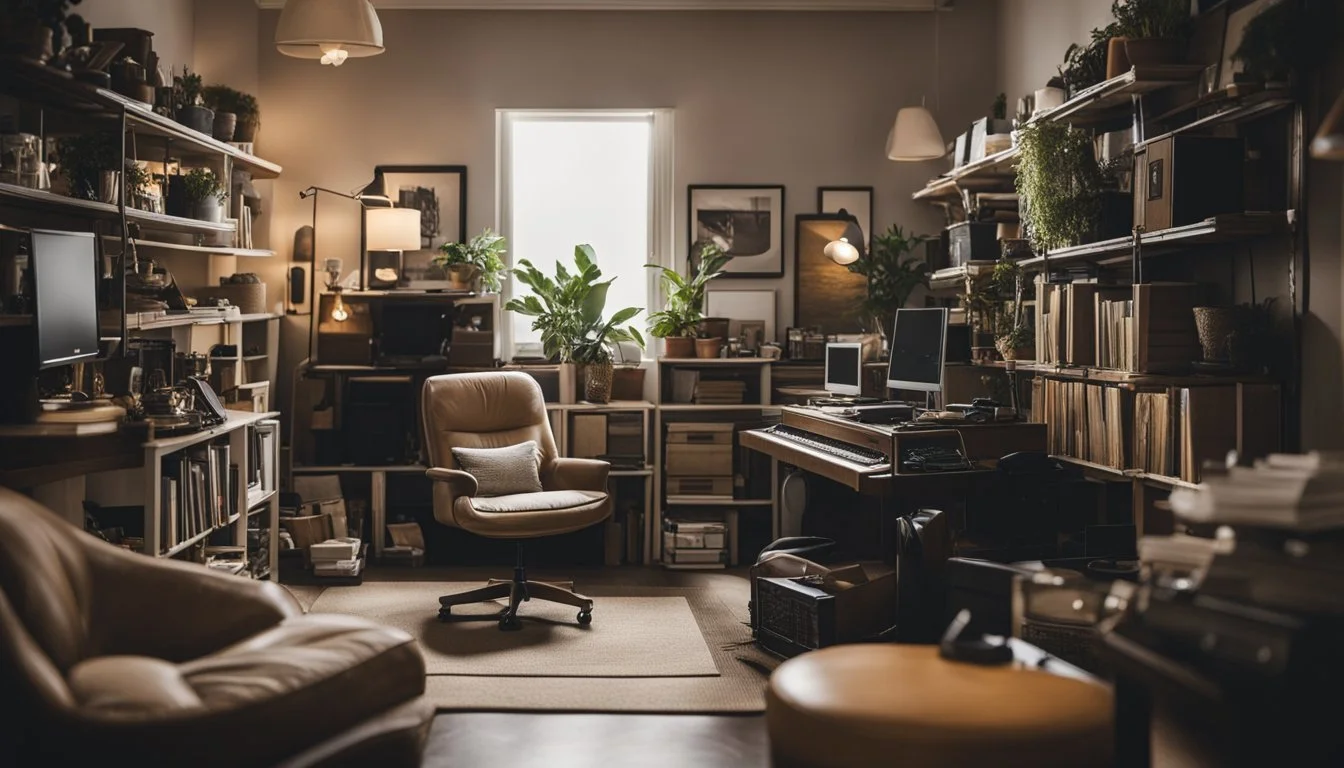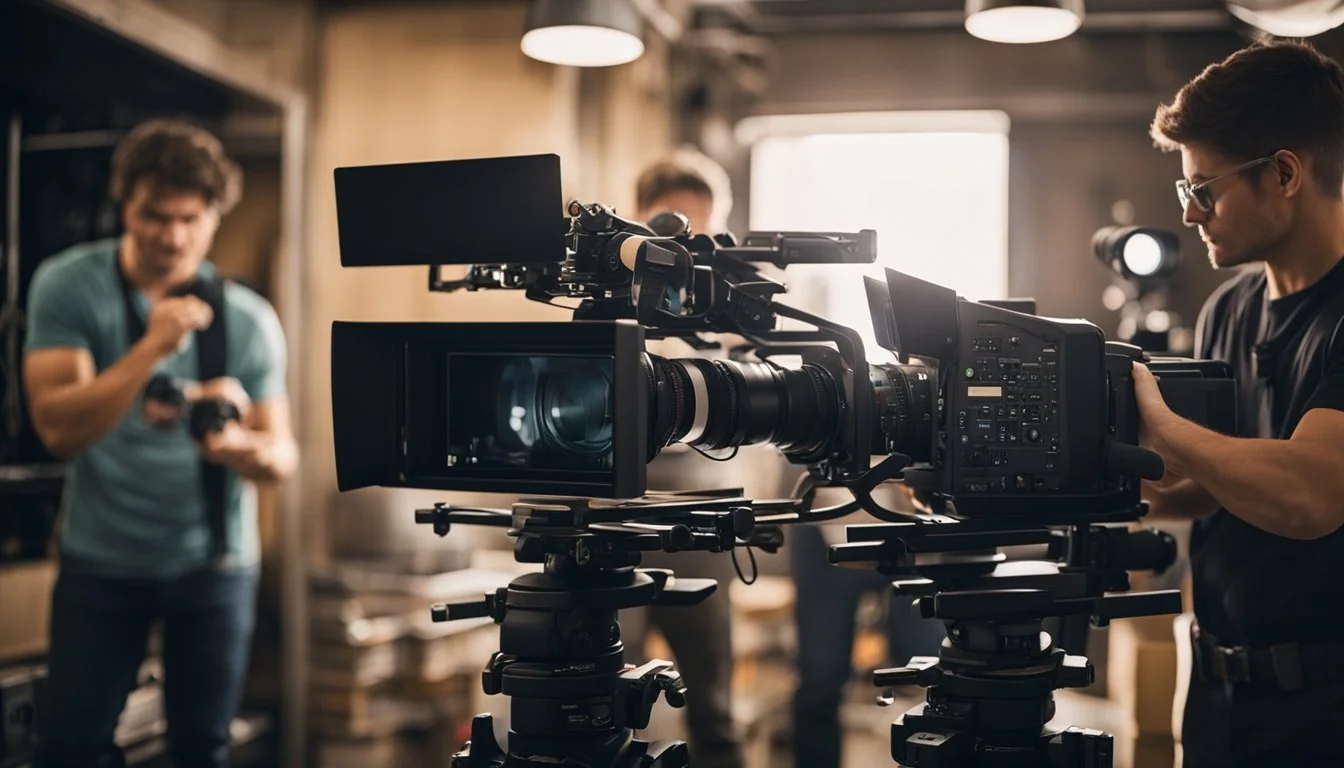14 Essential Tips for Filming in Confined Spaces
Maximize Your Shot in Tight Areas
Filming in confined spaces presents unique challenges that can test the creativity and technical skills of any filmmaker. These environments often limit movement, camera angles, and lighting options, demanding ingenious solutions to achieve the desired visual impact. Understanding how to maximize the potential of small spaces is crucial for creating compelling and visually interesting scenes.
Mastering the art of filming in confined spaces allows filmmakers to turn limitations into strengths, creating intimate and immersive experiences for the audience. By carefully considering lenses, camera movement, and lighting, filmmakers can convey depth and mood effectively, even in the tightest quarters. This article shares 14 essential tips to help filmmakers navigate and excel in such challenging conditions.
1) Utilize a Wide-Angle Lens for Better Coverage
A wide-angle lens is essential for filming in confined spaces. It allows the camera to capture more of the scene, offering a broader perspective.
This type of lens is particularly useful for tight interiors where space is limited. It can make small rooms appear larger, enhancing the visual appeal.
When choosing a wide-angle lens, consider one with a focal length shorter than 35mm. This range provides the best balance between coverage and image distortion.
Be aware that using a very wide or ultra-wide-angle lens may introduce some distortion. This can be minimized by keeping the camera level and avoiding extreme angles.
Wide-angle lenses also allow for greater depth of field, keeping more of the scene in focus. This is advantageous in close quarters where every detail matters.
2) Invest in compact lighting solutions
Compact lighting is crucial for filming in tight spaces. Traditional lighting setups often require large stands and cables, which can clutter small areas. Portable lights, such as LED panels or ring lights, are ideal for these environments.
Portable lights provide flexibility. They can be easily repositioned to achieve the desired effect without overwhelming the space. Battery-operated options eliminate the need for cumbersome cords.
When choosing compact lighting, consider brightness and adjustability. Lights with adjustable brightness can adapt to various scenarios, ensuring the subject is well-lit regardless of the confined conditions.
Additionally, color temperature control is important. It allows for adjustments to match natural light or to create the desired mood. Compact lights with built-in diffusers can soften the light, reducing harsh shadows.
Investing in compact lighting solutions can greatly improve the quality of footage in confined spaces, making the filming process more efficient and less intrusive.
Maximize natural light sources
Using natural light effectively is crucial when filming in confined spaces. It not only enhances the visual appeal but also minimizes the need for bulky lighting equipment that can clutter the area.
Position the subject near windows or other natural light sources to make the most of available light. Natural light can create a soft, flattering effect that is difficult to replicate with artificial lighting.
Consider the time of day for your shoot. Midday provides the most even and abundant natural light. Be mindful of the direction and intensity of the light to avoid harsh shadows.
Utilize reflectors to bounce natural light onto your subject. This can help fill in shadows and create a more balanced exposure. Simple objects like white walls or boards can work well as reflectors.
When possible, avoid unnecessary obstacles that block light. Rearranging furniture or opening up blinds can significantly improve the lighting conditions in a confined space.
4) Plan Your Shots Meticulously
Planning is crucial when filming in confined spaces. Due to the limited room, each shot must be carefully considered to maximize visual impact.
Storyboards can be immensely helpful. By sketching out each scene, filmmakers can visualize how the space will be utilized. This helps in determining camera angles and movements.
Blocking is another key element. Actors need to know precisely where to stand and move to stay within the frame. This ensures that scenes are shot efficiently without unnecessary adjustments.
Additionally, paying close attention to the equipment is essential. In tight spaces, camera placement can be restricted. Using smaller, more flexible gear allows for greater maneuverability.
Pre-visualization software can also be beneficial. These tools allow filmmakers to create digital models of the shooting environment. This aids in planning the most effective camera setups and lighting arrangements.
By thoroughly planning each shot, filmmakers can avoid common pitfalls and make the most of confined environments.
5) Use a Stabilizer for Smoother Footage
Using a stabilizer is crucial for capturing smooth video in confined spaces. Stabilizers help reduce the shakiness that often occurs when filming in tight quarters.
Filmmakers can choose various types of stabilizers, such as gimbals and handheld rigs. These tools make it easier to maintain steady shots even when moving.
Gimbals are particularly useful as they automatically adjust to keep the camera level. This feature is invaluable in confined environments where space is limited.
Another advantage of stabilizers is that they allow for more fluid camera movements. This can make your footage look more professional and engaging.
To get the best results, practice using the stabilizer before your shoot. Familiarity with the equipment will help you capture stable and smooth video more efficiently.
When walking with a stabilizer, move slowly and with control. Keeping your movements deliberate can significantly reduce shakiness and produce higher-quality footage.
In summary, investing in a good stabilizer is essential for anyone looking to film in confined spaces. It can transform shaky, amateur-looking shots into professional, smooth footage.
6) Leverage Mirrors to Create Depth
Mirrors are an effective tool to make small spaces appear larger in film.
By strategically placing mirrors, filmmakers can add an illusion of depth to the scene. This creates a sense of expansiveness without altering the physical space.
Mirrors can reflect light, making the area feel brighter and more open. This enhances the visual quality of the shot.
A well-positioned mirror can capture reflections of other parts of the room. This offers new perspectives without needing additional cameras.
When used thoughtfully, mirrors can contribute significantly to the visual storytelling in confined spaces.
7) Employ Overhead Shots for Unique Angles
Overhead shots provide a striking perspective by placing the camera directly above the subject. This 90-degree angle offers viewers a vertical view, making it seem as if they are looking down from the sky. This technique can be particularly useful in confined spaces where traditional camera angles might feel limiting.
Using overhead shots can illuminate spatial relationships within the scene. It allows the audience to see the layout and proximity of different elements, offering a clear overview. This approach can help portray how tight or expansive a small space actually is.
Overhead shots can also serve to highlight patterns or movements within the scene. For example, in choreography or action sequences, this angle can capture the flow of movement in a way that is not possible from ground levels.
When filming in restricted areas, overhead shots can add a sense of detachment. This can evoke certain emotions, such as insignificance or vulnerability, by making subjects appear smaller beneath the camera. This effect can contribute to the storytelling by adding a unique visual dimension.
Incorporate this technique to make confined spaces feel more dynamic and visually interesting, offering fresh perspectives that enhance the narrative impact.
8) Incorporate wireless equipment to reduce clutter
Reducing clutter in confined filming spaces is crucial for efficiency and safety. Wireless equipment such as microphones, transmitters, and monitors can help achieve this.
Wireless microphones eliminate the need for extensive cabling, allowing for greater movement flexibility. Sound quality remains high without the physical constraints of wired setups.
Wireless video transmitters enable directors and crew to view footage without tethering to cameras. This facilitates better on-set communication and movement.
Using wireless lighting controls can reduce the need for numerous cables in tight spaces. Adjusting light settings remotely helps maintain a clean and organized filming environment.
Wireless solutions also speed up setup and breakdown times, enhancing productivity. Filmmakers can focus more on creativity and less on managing tangled cables.
Overall, incorporating wireless equipment minimizes physical obstructions and maximizes usable space, making it an essential practice for filming in confined areas.
9) Employ split screens for dynamic shots
Filming in confined spaces can limit the camera's mobility. Split screens offer a solution by displaying multiple shots within a single frame. This technique can provide multiple perspectives simultaneously, enhancing storytelling without needing to move the camera excessively.
Split screens are useful for showing parallel actions or contrasting characters' experiences. For example, they can be used to depict two characters in separate areas of a small space.
Using split screens, filmmakers can combine the best performances from different takes, creating a unified image. This can be particularly valuable when actors play multiple roles or when executing complex scenes.
When employing split screens, precise planning during both shooting and editing is essential. During shooting, use a stand-in for scenes involving multiple characters played by the same actor. In editing, carefully align the shots to ensure a seamless transition. This approach can add depth to your confined space scenes.
10) Optimize audio with directional microphones
In confined spaces, capturing clear audio becomes challenging due to echoes and background noise. Directional microphones are essential tools for overcoming these challenges.
These microphones focus on picking up sound from a specific direction while minimizing unwanted noise from other angles. This is particularly useful in tight spaces where sound sources are close together.
Shotgun microphones, a common type of directional microphone, are highly effective in isolating dialogue and important sounds. They are designed to be pointed directly at the sound source, ensuring clarity and reducing ambient noise.
By positioning the directional microphone correctly, filmmakers can ensure it picks up only the intended sounds. Regularly monitoring audio levels helps prevent issues and maintain high-quality recordings.
Directional microphones are available in various models and price ranges, making it easier to find one that fits specific needs and budgets. Investing in a good directional microphone can significantly enhance the audio quality of any film shot in confined spaces.
11) Practice effective cable management
Effective cable management is crucial when filming in confined spaces. Start by planning the cable routes beforehand. This minimizes the risk of cables getting tangled or damaged in tight environments.
Use cable ties and Velcro straps to keep the cables organized. These tools help in bundling multiple cables together. This reduces clutter and enhances safety.
Label the cables clearly. By marking each cable with its purpose, you can easily identify and access the right cable when needed. This practice saves time during setup and takedown.
Secure the cables to the walls or floors using adhesive cable clips. This keeps them out of the way and prevents tripping hazards. It also helps maintain a neat filming area.
Regularly check the cables for wear and tear. Damaged cables can cause interruptions in the filming process. Replace any frayed or broken cables immediately to ensure smooth operation.
Consider using wireless technology where possible. Wireless microphones and video transmitters can significantly reduce the number of cables required, making the workspace less cluttered.
By adhering to these practices, filmmakers can maintain a cleaner and safer environment while working in confined spaces.
12) Use Neutral Colors to Avoid Visual Distraction
Avoid using bright or overly saturated colors in confined spaces. These colors can overwhelm the scene and draw attention away from the main subject.
Neutral colors like gray, beige, and white create a calm and balanced background. They help maintain focus on the characters and actions rather than the surroundings.
Lights and shadows interact more naturally with neutral colors. They enhance the depth and mood of the scene without competing for attention.
When choosing props and set design elements, stick to a neutral color palette. This reduces visual clutter, making the film appear more professional and polished.
Neutral colors are more versatile in post-production editing. They allow for easier color grading and adjustments, ensuring consistency across different shots and scenes.
13) Keep Your Crew Minimal for More Space
In confined spaces, every bit of room counts. A smaller crew reduces the risk of accidents and allows for more efficient movement. It also cuts down on noise and distractions, which can be crucial in tight quarters.
Reducing the number of crew members simplifies communication. With fewer people, it's easier to coordinate and maintain a calm, productive environment. It also streamlines the decision-making process, which can be vital during complex shoots.
Ventilation becomes easier to manage with fewer people in the space. This helps maintain better air quality and reduces the build-up of heat, making the environment safer and more comfortable for everyone involved.
Always prioritize essential personnel. Only those who are crucial to the shoot should be present. This includes key camera operators, directors, and necessary support staff. Non-essential personnel can watch from a remote feed if needed.
14) Plan for creative camera placements
In confined spaces, traditional camera placements may not always be possible. Filmmakers should think outside the box to find unique angles. Placing cameras in corners can offer new perspectives and add depth to the scene.
Utilizing full-frame cameras can help in capturing a wider view. This allows for more flexibility in cramped conditions without sacrificing visual quality.
Move the camera perpendicularly to the flat picture plane. This technique can create a sense of depth, making scenes more engaging for the audience. Portable and compact camera setups can also be useful.
Consider using mirrors to reflect parts of the scene that may be hard to capture directly. Experimenting with elevation, such as positioning the camera low to the ground or high up, can also provide compelling shots.
Strategically placed mounts and rigs can stabilize shots in tight areas. These placements can add variety and visual interest, enhancing the storytelling.
Understanding the Challenges
Filming in confined spaces presents a unique set of difficulties. Both physical and technical constraints can impact the quality of the final production.
Limited Movement and Space
Limited movement within confined spaces can restrict camera angles and actor positioning. Small rooms or tight corridors may not allow for extensive camera movements, making it crucial to plan shots meticulously.
Wide-angle lenses can help capture more of the scene, providing a sense of space. However, these lenses can also distort images if not used properly. It's important to rehearse movements carefully and utilize compact equipment.
Compact, versatile gear such as handheld stabilizers or drones can aid in achieving dynamic shots without requiring much space.
Lighting Constraints
Lighting conditions in confined spaces are often inadequate. Small or cramped environments may not have natural light sources, necessitating the use of artificial lighting. Portable LED lights are a go-to solution due to their flexibility and ability to fit into tight spots.
Using reflective surfaces can also help to bounce light and evenly distribute illumination. Keeping the light balanced and avoiding harsh shadows requires thoughtful arrangement of light sources.
When planning lighting setups, it’s beneficial to consider the electrical limitations. Using battery-powered lighting equipment can prevent overloading circuits.
Sound and Acoustics Management
Sound quality can suffer in confined spaces due to echo and reverberation. Hard surfaces often found in small environments can exacerbate these issues, making dialogue less clear.
Using sound-absorbing materials such as foam panels can help dampen echo. It’s also effective to use quality directional microphones to capture focused sound and reduce background noise.
Maintaining clear audio may require post-production efforts such as noise reduction and equalization. Ensuring reliable communication among the crew with wireless headsets can also enhance coordination.
Proper attention to these acoustic challenges can significantly elevate the audio quality of the final production.
Equipment Selection
Choosing the right equipment is critical when filming in confined spaces. It's essential to select compact cameras, appropriate lenses, and portable lighting solutions to ensure safety and high-quality footage.
Compact Camera Recommendations
Sturdy and compact cameras are ideal for confined spaces. Mirrorless cameras like the Sony A7S III offer excellent low-light performance and lightweight design. The Blackmagic Pocket Cinema Camera 6K provides high resolution and flexible mounting options. For adventurous and extreme conditions, GoPros are reliable due to their ruggedness and size.
Before selection, consider battery life, durability, and heat dissipation. These factors can significantly impact filming in tight, often poorly ventilated areas.
Optimal Lenses for Tight Spaces
When in tight quarters, it's best to use wide-angle lenses. 15mm to 24mm lenses can capture more of the environment and make narrow spaces appear larger. Fisheye lenses, like an 8mm lens, are useful for dramatic effects and maximizing field of view.
Prime lenses are usually sharper and faster but require changing lenses for different shots. Zoom lenses, while versatile, might be bulkier. Weighing these trade-offs is essential based on the filming situation.
Portable Lighting Solutions
Lighting in confined spaces must be compact and energy-efficient. LED panels are optimal due to their low heat output and adjustable brightness. Ring lights provide even illumination and are easy to position. Battery-powered lights, such as the Aputure Amaran series, ensure mobility and ease of use.
Clip-on lights or headlamps can be beneficial for particularly tight spots. Always check the CRI (Color Rendering Index) to ensure color accuracy and avoid color distortion in the footage.
Techniques for Effective Filming
Capturing compelling footage in confined spaces requires creativity and skill. A variety of techniques can help filmmakers make the most of tight quarters, ensuring each shot is well-composed and visually engaging.
Maximizing Camera Angles
Using wide-angle lenses can make small spaces appear larger. This approach provides a sense of depth and expansiveness. Filmmakers can achieve dramatic effects by moving the camera perpendicular to the flat picture plane. This technique creates an illusion of more space by manipulating depth perception.
Additionally, exploring vertical movements such as tilting the camera can reveal different elements within the confined area. It can also emphasize the height and depth of the space.
Using Mirrors and Reflections
Mirrors can double the visual space, helping to create an illusion of larger environments. By strategically placing mirrors, filmmakers can not only expand the perceived space but also include parts of the scene that would otherwise remain unseen. This technique can add a layer of complexity and interest to the visuals.
Reflections provide an opportunity to explore innovative compositions. They can capture unique angles and perspectives that contribute to the storytelling. This approach can make the scene more dynamic and visually engaging.
Maintaining Continuity
Consistency is key in confined space filming. Ensuring that lighting and props remain in the same place across shots is important for continuity. This prevents jarring transitions that can break the immersion.
Using detailed shot lists and diagrams is helpful. These tools can guide the filming process and maintain visual consistency. Precise planning can save time during shooting and post-production.
By focusing on these techniques, filmmakers can overcome the challenges of working in confined spaces while producing high-quality, engaging footage.

